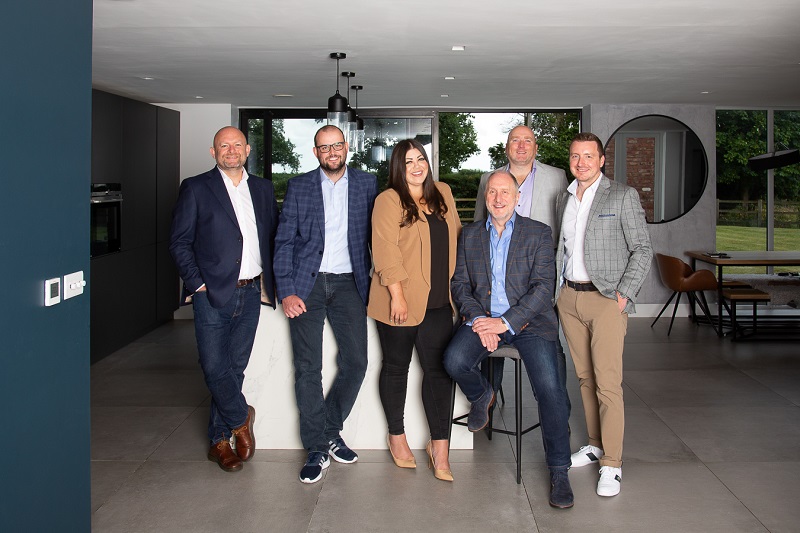Burcin Ressamoglu, CEO of Sodexo Engage, is extremely passionate about breaking down barriers and paving the way for women in business.
As the leader of Sodexo Engage, Burcin Ressamoglu is proud to have a diverse leadership to convey the powerful example of the importance of gender equality. She believes hiring more women in leadership positions benefits the company and establishes a visionary approach to leadership. Some months ago, when hiring a new member of her c-suite, Burcin pushed to ensure there were enough female candidates before the interview process kicked off.
She has shattered glass ceilings and has been a vocal advocate for women to reach their full potential in the workplace. Her unique perspective offers valuable insights into the importance of working towards a better future.
What inspired you to take a stand and demand action to address the imbalance in the C-suite?
I strive to lead by example and create an inclusive environment where women feel empowered to use their voices and take a seat at the table alongside their male colleagues. It’s crucial that women feel comfortable sharing their thoughts and perspectives because real change cannot occur without their input. This is something I am passionate about and committed to achieving.
Diversity, equity and inclusion (DE&I) is a topic that’s very close to my heart. To enact DE&I, I believe it’s essential to ensure that the organisation I am part of, and the people I work with, are actively creating an inclusive environment where everyone can thrive and share their ideas. The C-Suite of any business should represent diverse groups, and I am proud to champion this effort.
What challenges did you face as a woman in leadership, and how did you overcome them?
Advocating for gender equality and diversity is more than just a passion for me – it’s a deeply personal mission. As a Turkish woman whose career has taken her across Europe, Asia and the Middle East, I’ve faced several obstacles and challenges as a female business leader. No matter where I’ve found myself in the world, gender biases presented similar challenges.
One experience that comes to mind is when I encountered gender bias while working in a business development role in China. The APAC leadership team showed reluctance towards me. They looked at me, a married woman with two young children, and challenged my ability to handle such a big business scope across ten countries. It was frustrating, but I refused to let their biased assumptions hold me back.
I dug deep and summoned every ounce of confidence and assertiveness I had within me to deliver results that transcended the company’s expectations. The best part? Two years later, someone on that team offered me a role at their new organisation. Although I turned down the offer, the experience taught me that women are often underestimated by their male counterparts. And I also learned that we could exceed expectations and prove them wrong.
That experience continues to drive me to this day. I refuse to let conscious or unconscious bias limit me. Instead, I use it as fuel to work even harder, to be even more confident, and to inspire others to do the same.
In your experience, what benefits have you seen from having more women in leadership positions?
Investing in DE&I cannot be considered a nice-to-have – it is a must-have, especially during tough economic times. And the business benefits are extensive, touching everything from innovation to growth.
When boards are diverse, and more women are included in leadership positions, it can lead to better team dynamics, increased collaboration, and more effective communication.
Take McKinsey’s 2020 research, for example. They found that companies with diverse teams are more likely to outperform their peers financially. Companies in the top quartile for gender diversity on executive teams were 25% more likely to experience above-average profitability. And when it comes to ethnic and cultural diversity, top-quartile companies outperformed their fourth-quartile counterparts by 36% in terms of profitability.
The message is clear: if you want your business to thrive in today’s ever-changing landscape, gender, ethnic, and cultural diversity aren’t just important – they are imperative. But it’s not just about staying competitive. Investing in DE&I also helps to create a sense of belonging and inclusivity among all employees, regardless of their background. This can lead to a more engaged and motivated workforce and a more positive and productive workplace culture.
By prioritising diversity and inclusivity, businesses can position themselves to survive and thrive, even when the going gets tough. And that’s a powerful advantage that no company can afford to ignore.
How can companies create a more inclusive environment that promotes diversity and encourages women to pursue leadership roles?
Creating a culture encouraging women to pursue leadership roles is crucial to any successful DE&I initiative. But it’s not just about checking boxes or ticking off diversity quotas; it’s about weaving diversity and inclusion into the fabric of a company’s DNA.
As a leader, I am responsible for being a good role model and setting the tone for inclusivity at every level within the organisation. This means prioritising diversity in the hiring process, nurturing an inclusive culture and treating everyone with respect and fairness. I believe in being proactive when creating a diverse and inclusive workplace. For example, when we were hiring for a new CIO, I made sure that there were a significant number of women candidates on the list before we started interviewing.
As business leaders, we have the power to make diversity and inclusivity a reality in our organisations, and we need to set an example across all levels of the business. Take the lead and inspire others to follow your example, and together we can make real progress towards a more diverse and inclusive future. By prioritising DE&I and treating everyone with respect and fairness, you can create a workplace where everyone feels valued and included.
What advice would you give young women aspiring to be leaders in their respective fields?
My advice to aspiring leaders, both women and men: lead with empathy, make it personal, and be open to change. If you genuinely care about diversity and inclusion, own it as a personal mission and be the driving force behind the change you want to see
Build trust through open communication and continually seek feedback from your team and stakeholders to ensure your processes are effective and as inclusive as they can be.
As someone passionate about empowering women and creating an inclusive culture, I know this requires a strong commitment from the leadership team. But the payoff is enormous: increased employee satisfaction and engagement, better attraction and retention of top talent, and stronger financial performance.
38% of the UK Sodexo Engage board is female, and we think this has had an incredibly positive effect on our business performance.
If you want to make a positive change, don’t give up. Keep pushing forward and lead with empathy and purpose.
Can you share any specific initiatives or programmes that Sodexo Engage has implemented to support diversity and inclusion in the workplace?
At Sodexo Engage, we believe in creating an inclusive environment where every employee feels valued, heard, and appreciated. That’s why we have implemented various exciting diversity and inclusion initiatives celebrating cultural events and milestones throughout the year.
We like to turn important days like International Women’s Day and International Men’s Day into special events for our employees. We try our best to create a welcoming space where everyone can feel comfortable sharing their views and ideas in chat sessions, and we invite guest speakers to lead conversations about important topics.
We also like to recognise cultural events like Chinese New Year to bring awareness to different cultures and backgrounds. Last year, we participated in the Milton Keynes Pride Festival and provided our employees and their families with lunch and goodies. It was a fantastic opportunity to come together, celebrate, and show our support for the LGBT community.
We believe that education is key to creating a more inclusive workplace. That’s why we provide in-depth external training on Inclusion, Race & Ethnicity, and Gender for all employees, with a Manager Series for a more detailed dive into these important topics. We also have Employee Networks for Gender, Disability, Pride, Race & Ethnicity, and Generations and encourage all our employees to join.
Our DE&I Champions throughout the organisation are always on hand to ensure our teams know about the benefits of joining these networks and how to get involved. At our last DE&I training, we had 75% attendance from managers across the business, so this ethos is being taken on internally.
We’re proud of the initiatives we’ve implemented and our progress, but we know there’s always more we can do. That’s why we’ll continue to listen to our team members, learn from them, and work together to create a more inclusive and diverse workplace for all.
How do you balance your personal life and career as a CEO, and what practices have you found to help maintain a healthy work-life balance?
My family is very important to me and my Turkish culture, so going out for dinner with friends, having fun, and switching off from work helps me maintain a healthy work-life balance.
Taking a real break is key to wellbeing at work and home, and I make sure I take the time to do this for myself. During my time off, I make sure to disconnect from my normal routines, which leaves me feeling refreshed, motivated, productive and full of energy when I return to work.
How do you see the future of women in leadership evolving, and what steps do you think companies should take to support this evolution?
I believe the future holds great promise in the long term, but we can only realise it if women leaders in business continue to pave the way for future generations and empower women to pursue their goals.
To achieve this, companies need to embed policies and processes that provide women with equal opportunities for career progression as men. Bridging the gender representation gap and advancing women in leadership requires a holistic approach, as there is no straightforward solution to this complex issue.
To create a comprehensive strategy that better attracts, retains, and promotes women in leadership, organisations must take the time to understand how gender influences decision-making from the ground up. For instance, according to Harvard Business Review, high-potential women often lack sufficient sponsorship for promotion compared to their male counterparts, which hinders their chances of promotion within their organisations.
Therefore, leaders must make it part of their DNA to understand the barriers to equality and establish initiatives to facilitate the advancement of women. After all, by promoting an inclusive culture from the top down, leaders can set an example for their teams, inspiring them to bring their vision to life.









